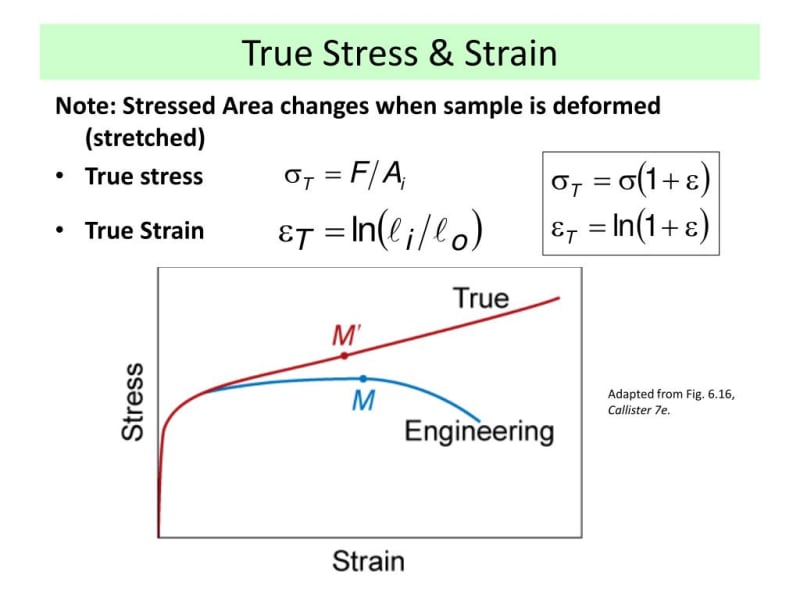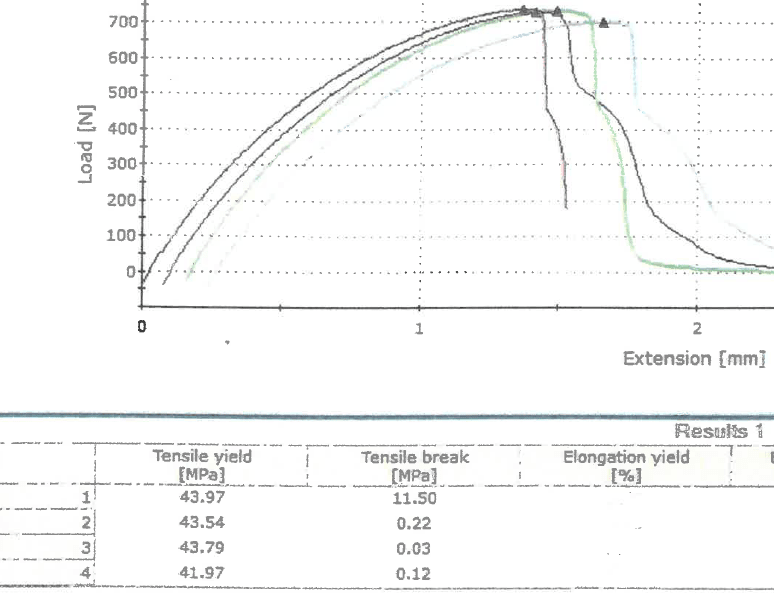My experience as a mixed metals/plastics engineer, is that for tensile results, the plastics industry runs a constant displacement/second test (as does metals industry), and then critically, much of it defines yield as "the highest load it was able to react" (what we would call ultimate strength in metals) and strength at break as "what it was reacting just before it snapped". That ultimate strength number usually occurs after it has necked down to half, stretched out to 3x its original length, and has a fracture halfway through it. It's pretty far gone.
Please see below an exemplary image of this happening, where I got told on a datasheet a UTS of basically 0 MPa, because, as it turned out upon inspection of the test curves, 3 out of 4 the samples basically held on by a few strands of glass fibre until that fibre finally got pulled all the way free and the machine recorded a break.
This frustrates me to no end, to the extent that when I received that one, I wrote a big email to the polymer supplier about how I wanted them to stop sending me datasheets by that definition, because;
1) The plastic is usually well and truly cooked and very permanently deformed once it reaches "Yield" so it's not useful to figure out a repeatable strength
2) You can't use the polymer for any kind of static load between its yield and its ultimate strength - this is on the backside of its stress-strain curve and if you operate there, it will be necking down and failing momentarily.
3) There's ambiguity as to which definition is used on a datasheet, as some polymers that don't appreciably neck or weaken from ultimate strenght to final failure (for example some fibre filled stuff), so yield will record similar to UTS, which I will interpret as e.g. a ceramic not yielding at all and then shattering, but in reality there may have been significant yield earlier in the curve, not picked up because of this definition.
So in general, yield can be used as UTS, and ultimate strength can be used for nothing in my field at least, and if you don't know by which method your datasheet has been labelled, then nothing can be used for anything because everything is up in the air.
Good luck!


